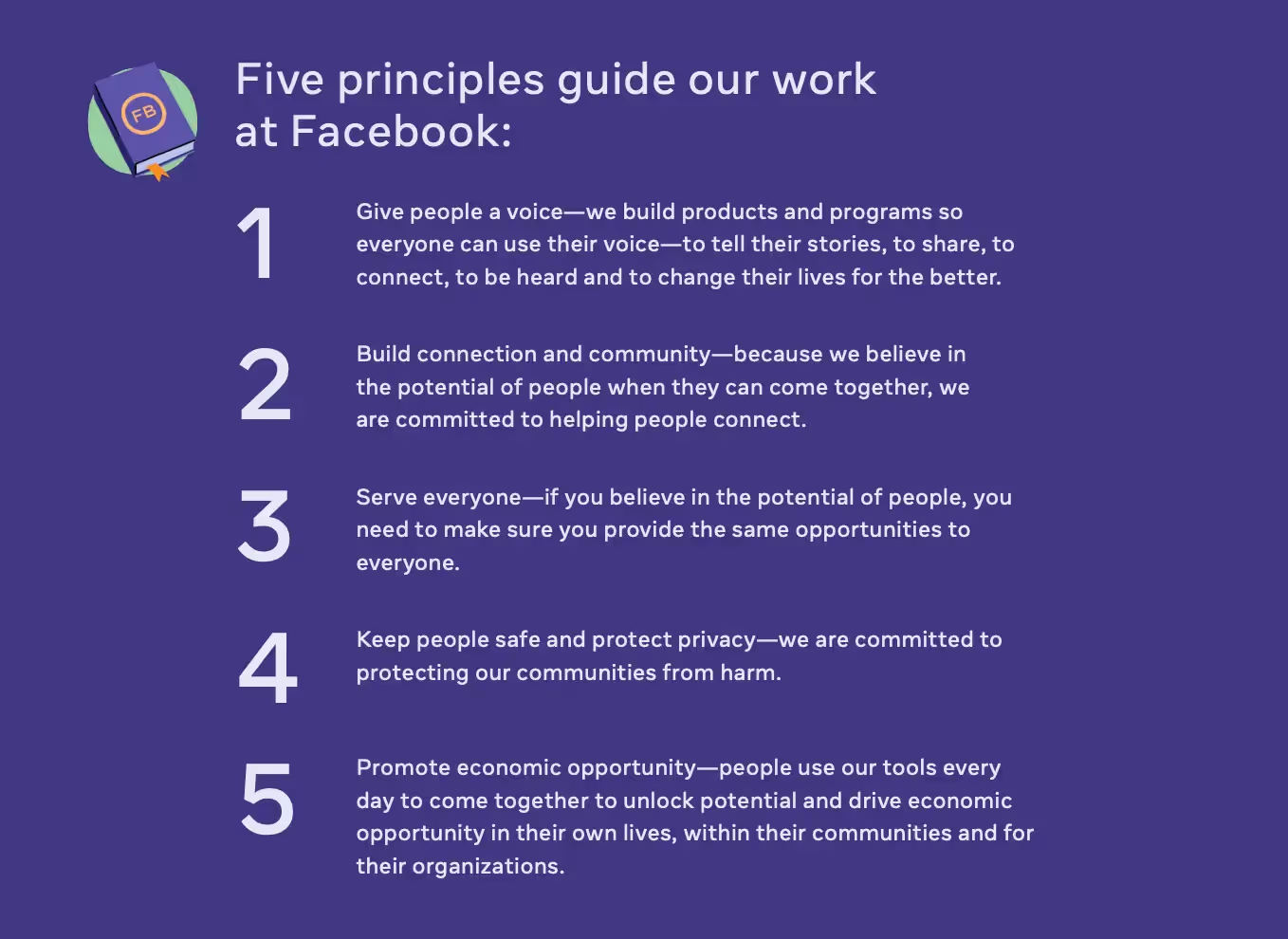

Are you sticking to your principles or frustrating your employees?
Nearly a decade ago, I was invited to visit an unmarked Facebook office in Atlanta. At the time, I was using the growing social platform to drive digital marketing campaigns, and I was curious regarding what the platform had to offer in terms of targeting audiences.
The secrecy of the office was intriguing, but what I learned about the power within was jaw-dropping. The amount of data that could be gathered, organized, and displayed on any brand or any individual was truly remarkable. Immediately, I could see the potential for marketers to harness this power to reach millions of consumers with highly relevant content and reap the rewards of a precise feedback loop. It was brilliant to see – so brilliant it was scary.
Fast forward to today, and we all know how powerful Facebook really is. The world’s largest media company, it profits by trading access for data. Every day, over 1.9 billion people log in to Facebook, often unknowingly feeding reams of personal information into sophisticated algorithms that actors – both good and bad – can use to target individuals with highly relevant content designed to persuade, to sell, and to convince.
Here, audiences are persuaded not just to purchase products, but also to believe in ideas. These ideas are so potent that they can topple a government and disrupt public health.
With such great power comes great responsibility. How can Facebook police such a broad swath of humanity to ensure its platform is living up to its principles?
On its website, Facebook has published five principles to guide its work:

These principles are reinforced by “Requirements of Facebook personnel,” which endorse ideas such as working in the best interest of Facebook users and speaking up when you have concerns.

These are noble principles. Facebook’s founder, Mark Zuckerberg, has been quick to fall back on them when questioned about misinformation on its platform or its harmful effects.
Standing before the U.S. Congress, Zuckbererg was challenged regarding a whistleblower report citing Instagram’s negative effects on the mental health of teenagers and younger children. The report indicated that 13 percent of British teenage users and 6 percent of American teenage users had reported suicidal thoughts incited by their use of the platform. Zuckerberg’s response was simply that the allegations "don’t make any sense.” He stated, "At the heart of these accusations is this idea that we prioritize profit over safety and well-being. That's just not true.”
While Facebook can claim to be a benevolent force for society, connecting people, building community, ensuring safety and privacy, their actions can appear contradictory.
And their employees take notice.
It’s no wonder that Facebook’s employees are speaking out, going so far as to allege that the “company prizes growth and profits over combating hate speech, misinformation and other threats to the public.”
At LOCAL, our work often revolves around companies embarking on transformative journeys. Stakeholders and stockholders can clearly see the benefits of these re-organizations, mergers, or technology integrations. Some will reduce costs and produce growth opportunities. Some will drive efficiency. Some will help build healthier cultures. And some will help develop new capabilities that will help the companies stay competitive.
However, what’s often made less clear is how these changes will benefit the people who work within those companies.
Change managers are often tasked with digging in to understand the details, developing “From-To” statements that take employees from “how you do ‘it’ today” to “how you will do ‘it’ tomorrow.”
But what happens when the change isn’t in the best interest of some employees? What if it means they’ll have to abandon a tool they’ve mastered after 25 years of practice? What if it means the loss of relationships they’ve cultivated? What if it means a loss of authority or budget? What if it means more work, not less?
Cognitive dissonance refers to the mental conflict that arises when someone's beliefs conflict with their behavior. However, it also can affect corporations. When employees are told one thing by leadership but observe another, it can create serious tension and distrust.
Imagine that a company decides to upgrade its HR administrative system with a new technology platform. You can already hear the pitch:
“The new tool will save you time.”
“The new tools will make it easier to perform your job.”
“The new tool will empower you.”
In theory, the change makes sense. However, the initial feeling most employees will experience is loss. Early on, their experience is about to be harder and take longer.
To your employees, the result of this dissonance is the feeling of a bait-and-switch. It’s so powerful that it can turn willful advocates into outspoken critics–like those at Facebook.
The gap between Facebook’s principles and its reality isn’t just a PR challenge. A hasty company name change to Meta won’t fix the problem. It’s a black mark on the brand — their employees had begun calling the Facebook association a “brand tax” — that impacts both consumer and employee trust. Ultimately, the harm spreads, resulting in higher recruiting and retention costs.
As you approach your own change program or transformation, these principles can help you avoid creating cognitive dissonance:
All of this comes down to a sense of empathy and a commitment to intentional effort. Of course, it’s easier and faster to ignore perceptions, focus on compliance, and hit the accelerator. And that’s precisely why most transformation projects fail. But if you want to protect your investment, win your team’s loyalty, and ensure your change’s survival, you will put in the work.